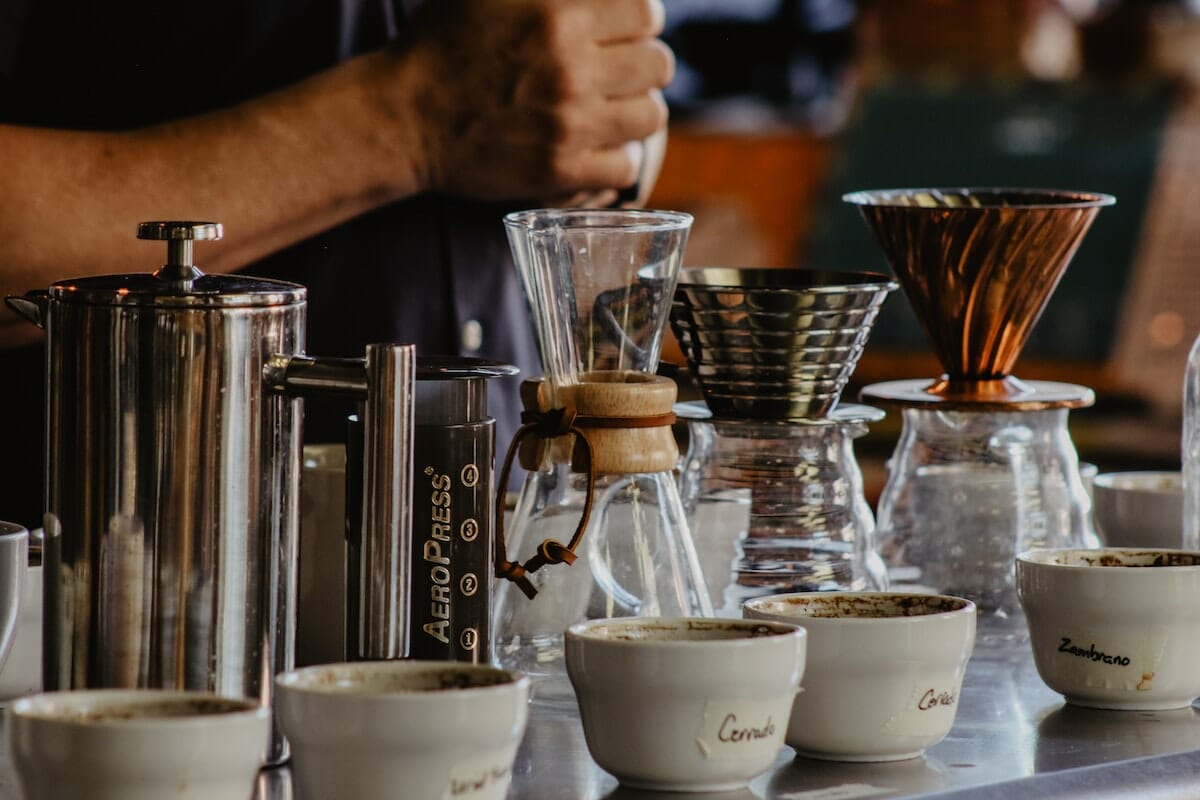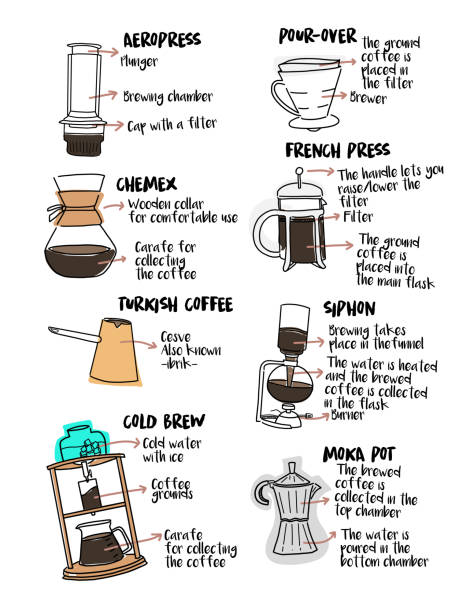The Science Behind Coffee Brewing: Just How Temperature Level and Time Affect Your Drink
Recognizing the science behind coffee developing exposes that temperature and time are not plain variables however essential components that dictate the beverage's flavor account and general top quality. As we check out the subtleties of these aspects, the question develops: exactly how can one successfully equilibrium temperature and time to attain that ideal mixture?
The Chemistry of Coffee Removal
The chemistry of coffee extraction explores the intricate procedures that change raw coffee beans into the fragrant drink enjoyed worldwide. This makeover mainly entails the solubility of various compounds existing in the beans, which are affected by elements such as work dimension, water high quality, and the developing technique used.
Throughout the developing procedure, warm water works as a solvent, drawing out soluble substances, consisting of high levels of caffeine, lipids, acids, and sugars, from the coffee premises. Each substance adds to the taste account, fragrance, and body of the last beverage. For example, acids are accountable for bright and tasty notes, while oils add to a rich mouthfeel.
The removal process is not uniform; different compounds dissolve at various prices. The first stages of brewing essence acids and sugars, resulting in a pleasant acidity, while extended extraction can lead to bitterness as a result of over-extraction of unwanted substances. Recognizing these chemical interactions is critical for optimizing developing methods, as the equilibrium between extraction time and water temperature level can substantially affect the total high quality of the coffee. Eventually, grasping the chemistry of coffee removal is key to achieving a tasty and all-round cup.
Perfect Brewing Temperatures
Discovering the best developing temperature level is crucial for unlocking the complete potential of coffee tastes and aromas - coffee brewing methods. Study shows that the optimal array for brewing coffee exists between 195 ° F to 205 ° F(90 ° C to 96 ° C) Within this array, the removal procedure successfully dissolves the desirable soluble substances in coffee beans, leading to a flavorful and balanced mug
Brewing at lower temperatures, such as listed below 195 ° F(90 ° C ), might cause under-extraction, yielding an acidic and weak mixture with soft flavors. On the other hand, developing at temperature levels going beyond 205 ° F(96 ° C) can cause over-extraction, generating a bitter and harsh preference because of the excessive dissolution of undesirable compounds, such as tannins.
In addition, the perfect brewing temperature level can vary depending upon the coffee bean kind and roast degree. As an example, lighter roasts frequently gain from slightly greater temperatures to enhance their complicated taste accounts, while darker roasts may be much better fit to reduced temperature levels to alleviate bitterness.
Ultimately, maintaining accuracy in developing temperatures is essential for accomplishing a harmonious equilibrium of flavors, making sure that every mug of coffee provides a gratifying sensory experience.
Influence of Brewing Time
Brewing time plays an essential function in identifying the taste profile and general top quality of coffee. Much shorter developing times can result in under-extraction, leading to a sour or weak taste, as not sufficient soluble substances are liquified.
Optimum developing time varies depending upon the method used and the work size of the coffee. A French press normally requires about 4 mins, while coffee extraction is usually finished within 25 to 30 seconds. It is important to calibrate developing time in conjunction with other variables, such as water temperature and coffee-to-water proportion, to achieve the wanted taste profile.
Comprehending the impact of developing time makes it possible for coffee lovers to improve their developing methods, ultimately boosting the sensory experience of their mug (coffee brewing methods). With careful interest to this variable, one can unlock the complete potential of the coffee, exposing its special characteristics and nuances
Brewing Techniques and Their Results

For instance, approaches like French press and cool mixture allow for a longer steeping time, leading to a fuller body and durable flavor as a result of raised extraction of oils and soluble solids. Conversely, coffee developing makes use of high pressure and a shorter extraction time, producing a additional info focused shot that emphasizes intense tastes and a rich crema.
Pour-over techniques, such as Chemex or V60, provide an even more regulated extraction process, enabling the brewer to manipulate flow rate and water distribution, which can enhance illumination and quality. Meanwhile, percolation techniques cycle water via the coffee premises several times, leading to a more powerful, often bitter taste.
Last but not least, using paper filters versus steel filters can additionally influence the final preference; paper filters normally yield a cleaner mug by trapping oils and fine bits, while metal filters allow even more oils to pass through, adding to a fuller mouthfeel - coffee brewing methods. Understanding these nuances can elevate the coffee experience significantly
Tips for Refining Your Brew
A well-executed mixture can transform even the most basic coffee into an amazing experience. Grind the beans simply before brewing to maximize freshness, making certain the grind size matches your developing technique-- coarser for French press and finer for espresso.
Water high quality plays an essential role; usage filteringed system water complimentary from impurities. The optimal developing temperature level ranges in between 195 ° F and 205 ° F(90 ° C to 96 ° C ) Too warm can burn the coffee, while also great might under-extract tastes.
Timing is similarly essential. For immersion techniques, soaking for three to 5 minutes is optimal, whereas drip methods commonly take around five mins. Experiment with brew times to find your favored stamina.

Conclusion
In summary, the complex relationship between temperature and time is vital in the coffee brewing process. Sticking to optimum developing temperature levels in between 195 ° F and 205 ° F, together with exact timing tailored to each technique, makes sure the preferred flavor profile is attained. Recognizing these scientific concepts empowers people to improve their brewing methods, eventually resulting in a much more balanced and pleasurable coffee experience. Proficiency of these elements is important for any coffee lover seeking quality in their drink.
Understanding the scientific research behind coffee developing reveals that temperature level and time are not simple variables however pivotal components that determine the drink's More Info flavor account and overall quality. Recognizing these chemical interactions is crucial for optimizing developing techniques, as the equilibrium between removal time and water temperature can substantially influence the total high quality of the coffee.Developing time plays a pivotal function in determining the flavor profile and general top quality of coffee. By concentrating on these aspects-- bean top quality, grind dimension, water temperature level, soaking time, and ratio-- you can raise your coffee developing process, resulting in a continually exceptional cup.
In summary, the elaborate partnership in between temperature level and time is paramount in the coffee brewing process.
Comments on “Grasping Coffee Brewing Methods: Vital Methods for each Coffee Lover”